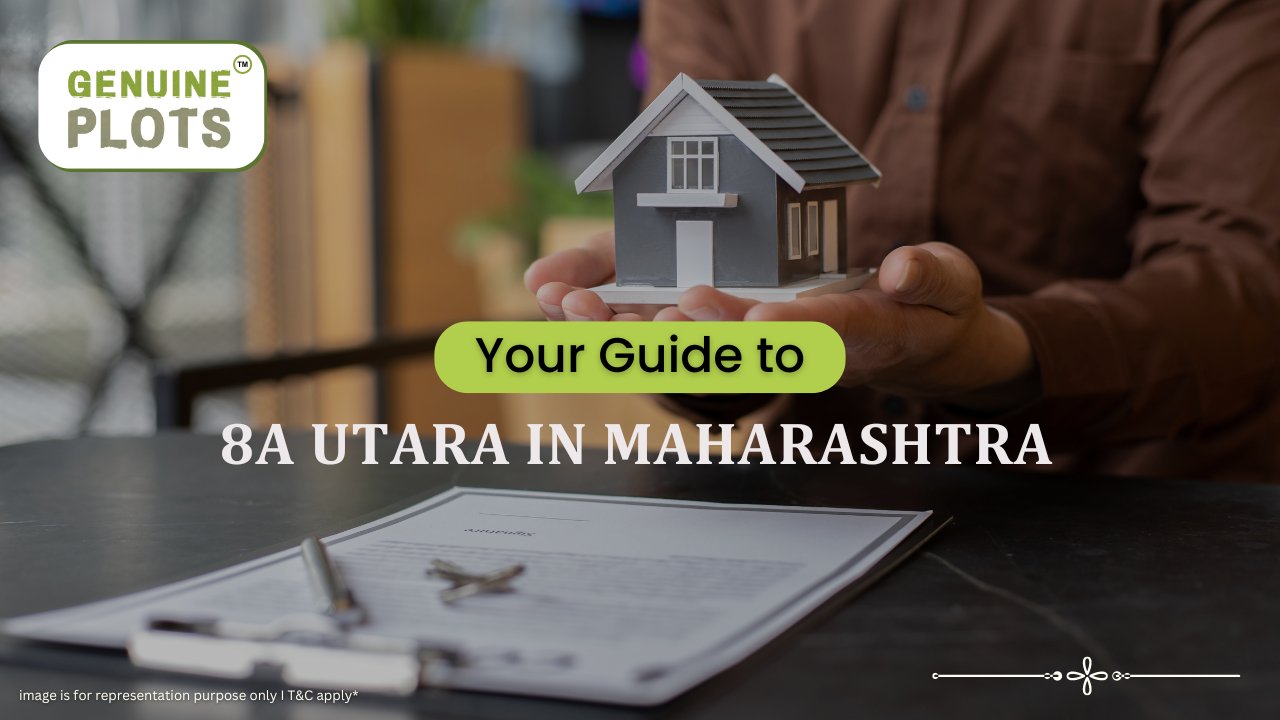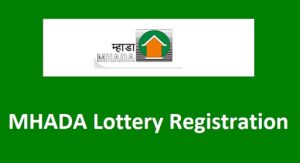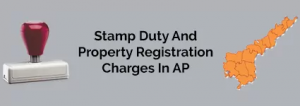Understanding land records in Maharashtra is vital for anyone involved in property ownership, buying, selling, or inheritance. Among the most crucial documents in land administration in Maharashtra are the
7/12 extract (locally called Saat Baara Utara) and the
8A extract. While the 7/12 document is well-known, many people are still unclear about what exactly
8A means, how it differs from 7/12, and what role it plays in ownership validation.
In this comprehensive blog, we will deeply explore the 8A land record in Maharashtra, compare it with other critical documents like the 7/12 extract and property card, explain how to access and read it, and why every landowner must be aware of it. Whether you’re an investor, a buyer, or simply managing ancestral land, this guide is for you.
Also Read:- Jankalyan Portal Sambal: Download | Login & Registration and KYC
What is 8A in Land Records in Maharashtra?
The 8A extract, also referred to as Utara 8A, is a vital component of land records maintained by the Revenue Department of Maharashtra. It acts as a supplementary ownership document that records the mutation entries, i.e., updates related to the transfer or changes in ownership of land.
While the 7/12 extract provides details such as the land’s survey number, cultivation data, area, and ownership, the 8A focuses specifically on the updated list of owners and the history of ownership changes.
What is 8A and 7/12? How Do They Work Together?

Understanding what 8A and 7/12 together are is essential because both these extracts complement each other in presenting a holistic view of a land parcel.
- The 7/12 extract (Form VII and Form XII) displays agricultural details, tenancy, crop information, and primary ownership.
- The 8A extract provides a focused list of owners, post mutations (inheritance, sale, gift, etc.).
Together, they help determine both present ownership and agricultural usage, ensuring transparency in landholding records.
Also Read:- How to Buy E-Stamp in Maharashtra in 2025-26?
What is 8A Khata Number and Why is it Important?
The 8A Khata Number is a unique identification number assigned to the landholder or property in the 8A extract. This number is crucial for:
- Verifying legal ownership
- Conducting mutation processes
- Land transactions such as buying, selling, or leasing
- Filing applications with revenue or registration departments
This number ensures that the owner listed in the 8A is accurately linked with a particular survey number of land.
What is Namuna 8 in Maharashtra?

Namuna simply means format or template. So, Namuna 8 refers to the official template or format used by the Revenue Department of Maharashtra to generate the 8A extract. This template includes:
- Survey number
- Name(s) of landowners
- Khata number
- Area of land owned
- Mutation entries with dates
So, when people refer to Namuna 8 in Maharashtra, they are essentially referring to the official 8A document that records ownership.
What is the Difference Between 7/12 and 8A and Property Card?

The difference between 7/12 and 8A and the property card is often misunderstood. Here’s a breakdown to help:
7/12 Extract (Saat Baara Utara)
- Combines details from Form VII (owners) and Form XII (crops)
- Shows land usage, cultivator info, tenancy, and ownership
- Applicable mostly in rural and agricultural zones
8A Extract
- Focused list of current landowners
- Reflects ownership after mutation
- Does not include crop or agricultural data
Property Card
- Maintained mainly for urban areas
- Shows property ownership, tenure, and legal disputes
- Records up-to-date ownership and valuation
Also Read:- Bhulekh Mahabhumi Land Record in Maharashtra – Housiey
How to Read 8A Utara?
Learning how to read 8A Utara can help you confidently handle land transactions. Here’s how to understand its key components:
- Survey Number – Identifies the land parcel
- Village Name – Indicates locality
- Owner Names and Addresses – Lists current legal owners
- Khata Number – Property account number
- Area Owned – In hectares or acres
- Mutation Entry Numbers – Record of changes with dates
- Remarks Section – Notes legal disputes, court orders, etc.
Reading it alongside the 7/12 extract gives a clear picture of ownership and any possible disputes.
How to Get Old Land Records in Maharashtra?
If you’re wondering how to get old land records in Maharashtra, follow these steps:
Online Method:
- Visit the official Mahabhulekh portal
- Select your division (Pune, Konkan, Nashik, Aurangabad, Amravati, Nagpur)
- Choose 8A or 7/12 from the options
- Enter district, taluka, village, and survey number
- Retrieve and download old land records
Offline Method:
- Visit the Talathi office in your village
- Submit a written application with the survey number and your ID proof
- Pay nominal charges if required
- Collect certified copies of past records
This process helps you verify past ownerships, resolve disputes, or establish ancestral property links.
Also Read:- Non Occupancy Charges in Society in Maharashtra in 2025
How to Access 7/12 and 8A Online?
Thanks to digitization, you can now access 7/12 and 8A online easily:
Steps to Get 7/12 and 8A Online:
- Go to https://bhulekh.mahabhumi.gov.in/

- Select your division
- Click on “8A” or “7/12”
- Input details like district, taluka, and village
- Enter the survey number and the captcha
- View or download the document
These online services make land verification easy, especially for people living away from their village or NRIs managing inherited land.
Why Is 8A Crucial for Land Transactions?
The 8A extract holds great significance when it comes to buying, selling, or inheriting land:
- It legally confirms who the current owners are
- Helps identify the nature and extent of ownership
- Acts as legal proof for mutation and registration
- Prevents fraudulent land transfers
Final Thoughts: Why Every Landowner Must Know About 8A
The 8A extract is often under-recognized, yet it plays a pivotal role in maintaining clear and dispute-free ownership records. While the 7/12 extract remains the face of land records in Maharashtra, the 8A backs it up by providing a more current list of landholders after mutations.
Whether you’re planning a land transaction or simply want to update your inheritance documents, make it a point to download and check both the 7/12 and 8A online. And if you’re confused between what is 8A and 7/12, remember that one shows land use and history, while the other reflects updated ownership.
Also Read:- Stamp Duty on Rent Agreement in Maharashtra 2025 | Housiey
About Housiey
At Housiey Blogs, we simplify your journey in real estate—whether it’s buying your first home, investing in land, or verifying property documents. Our platform connects you directly with developers, eliminating broker hassles and ensuring a smooth, transparent, and secure experience.
Want to deepen your understanding of Maharashtra land documents? Don’t forget to read our comprehensive blog on “Importance of 7/12 Utara“—it’s the perfect next step!
FAQs
Understanding land records in Maharashtra is vital for anyone involved in property ownership, buying, selling, or inheritance. Among the most crucial documents in land administration in Maharashtra are the
7/12 extract (locally called Saat Baara Utara) and the
8A extract. While the 7/12 document is well-known, many people are still unclear about what exactly
8A means, how it differs from 7/12, and what role it plays in ownership validation.
In this comprehensive blog, we will deeply explore the 8A land record in Maharashtra, compare it with other critical documents like the 7/12 extract and property card, explain how to access and read it, and why every landowner must be aware of it. Whether you’re an investor, a buyer, or simply managing ancestral land, this guide is for you.
Also Read:- Jankalyan Portal Sambal: Download | Login & Registration and KYC
What is 8A in Land Records in Maharashtra?
The 8A extract, also referred to as Utara 8A, is a vital component of land records maintained by the Revenue Department of Maharashtra. It acts as a supplementary ownership document that records the mutation entries, i.e., updates related to the transfer or changes in ownership of land.
While the 7/12 extract provides details such as the land’s survey number, cultivation data, area, and ownership, the 8A focuses specifically on the updated list of owners and the history of ownership changes.
What is 8A and 7/12? How Do They Work Together?

Understanding what 8A and 7/12 together are is essential because both these extracts complement each other in presenting a holistic view of a land parcel.
- The 7/12 extract (Form VII and Form XII) displays agricultural details, tenancy, crop information, and primary ownership.
- The 8A extract provides a focused list of owners, post mutations (inheritance, sale, gift, etc.).
Together, they help determine both present ownership and agricultural usage, ensuring transparency in landholding records.
Also Read:- How to Buy E-Stamp in Maharashtra in 2025-26?
What is 8A Khata Number and Why is it Important?
The 8A Khata Number is a unique identification number assigned to the landholder or property in the 8A extract. This number is crucial for:
- Verifying legal ownership
- Conducting mutation processes
- Land transactions such as buying, selling, or leasing
- Filing applications with revenue or registration departments
This number ensures that the owner listed in the 8A is accurately linked with a particular survey number of land.
What is Namuna 8 in Maharashtra?

Namuna simply means format or template. So, Namuna 8 refers to the official template or format used by the Revenue Department of Maharashtra to generate the 8A extract. This template includes:
- Survey number
- Name(s) of landowners
- Khata number
- Area of land owned
- Mutation entries with dates
So, when people refer to Namuna 8 in Maharashtra, they are essentially referring to the official 8A document that records ownership.
What is the Difference Between 7/12 and 8A and Property Card?

The difference between 7/12 and 8A and the property card is often misunderstood. Here’s a breakdown to help:
7/12 Extract (Saat Baara Utara)
- Combines details from Form VII (owners) and Form XII (crops)
- Shows land usage, cultivator info, tenancy, and ownership
- Applicable mostly in rural and agricultural zones
8A Extract
- Focused list of current landowners
- Reflects ownership after mutation
- Does not include crop or agricultural data
Property Card
- Maintained mainly for urban areas
- Shows property ownership, tenure, and legal disputes
- Records up-to-date ownership and valuation
Also Read:- Bhulekh Mahabhumi Land Record in Maharashtra – Housiey
How to Read 8A Utara?
Learning how to read 8A Utara can help you confidently handle land transactions. Here’s how to understand its key components:
- Survey Number – Identifies the land parcel
- Village Name – Indicates locality
- Owner Names and Addresses – Lists current legal owners
- Khata Number – Property account number
- Area Owned – In hectares or acres
- Mutation Entry Numbers – Record of changes with dates
- Remarks Section – Notes legal disputes, court orders, etc.
Reading it alongside the 7/12 extract gives a clear picture of ownership and any possible disputes.
How to Get Old Land Records in Maharashtra?
If you’re wondering how to get old land records in Maharashtra, follow these steps:
Online Method:
- Visit the official Mahabhulekh portal
- Select your division (Pune, Konkan, Nashik, Aurangabad, Amravati, Nagpur)
- Choose 8A or 7/12 from the options
- Enter district, taluka, village, and survey number
- Retrieve and download old land records
Offline Method:
- Visit the Talathi office in your village
- Submit a written application with the survey number and your ID proof
- Pay nominal charges if required
- Collect certified copies of past records
This process helps you verify past ownerships, resolve disputes, or establish ancestral property links.
Also Read:- Non Occupancy Charges in Society in Maharashtra in 2025
How to Access 7/12 and 8A Online?
Thanks to digitization, you can now access 7/12 and 8A online easily:
Steps to Get 7/12 and 8A Online:
- Go to https://bhulekh.mahabhumi.gov.in/

- Select your division
- Click on “8A” or “7/12”
- Input details like district, taluka, and village
- Enter the survey number and the captcha
- View or download the document
These online services make land verification easy, especially for people living away from their village or NRIs managing inherited land.
Why Is 8A Crucial for Land Transactions?
The 8A extract holds great significance when it comes to buying, selling, or inheriting land:
- It legally confirms who the current owners are
- Helps identify the nature and extent of ownership
- Acts as legal proof for mutation and registration
- Prevents fraudulent land transfers
Final Thoughts: Why Every Landowner Must Know About 8A
The 8A extract is often under-recognized, yet it plays a pivotal role in maintaining clear and dispute-free ownership records. While the 7/12 extract remains the face of land records in Maharashtra, the 8A backs it up by providing a more current list of landholders after mutations.
Whether you’re planning a land transaction or simply want to update your inheritance documents, make it a point to download and check both the 7/12 and 8A online. And if you’re confused between what is 8A and 7/12, remember that one shows land use and history, while the other reflects updated ownership.
Also Read:- Stamp Duty on Rent Agreement in Maharashtra 2025 | Housiey
About Housiey
At Housiey Blogs, we simplify your journey in real estate—whether it’s buying your first home, investing in land, or verifying property documents. Our platform connects you directly with developers, eliminating broker hassles and ensuring a smooth, transparent, and secure experience.
Want to deepen your understanding of Maharashtra land documents? Don’t forget to read our comprehensive blog on “Importance of 7/12 Utara“—it’s the perfect next step!
FAQs










